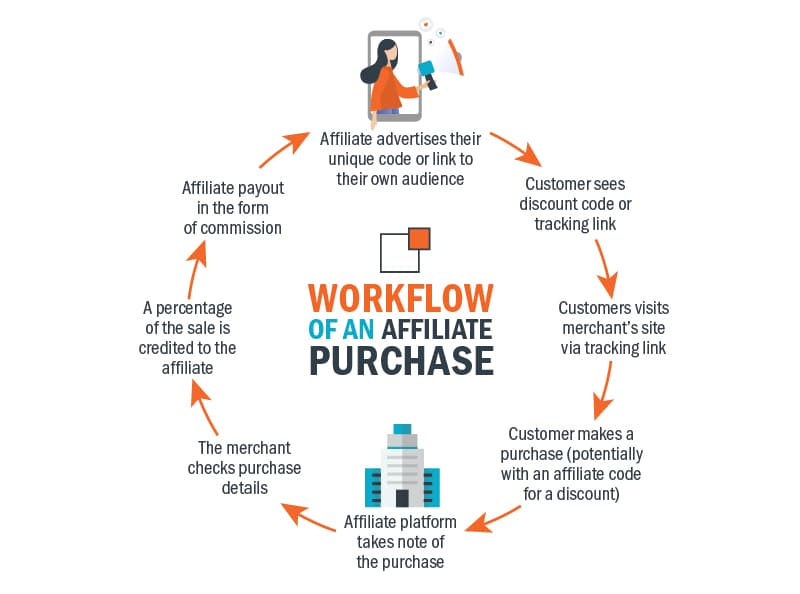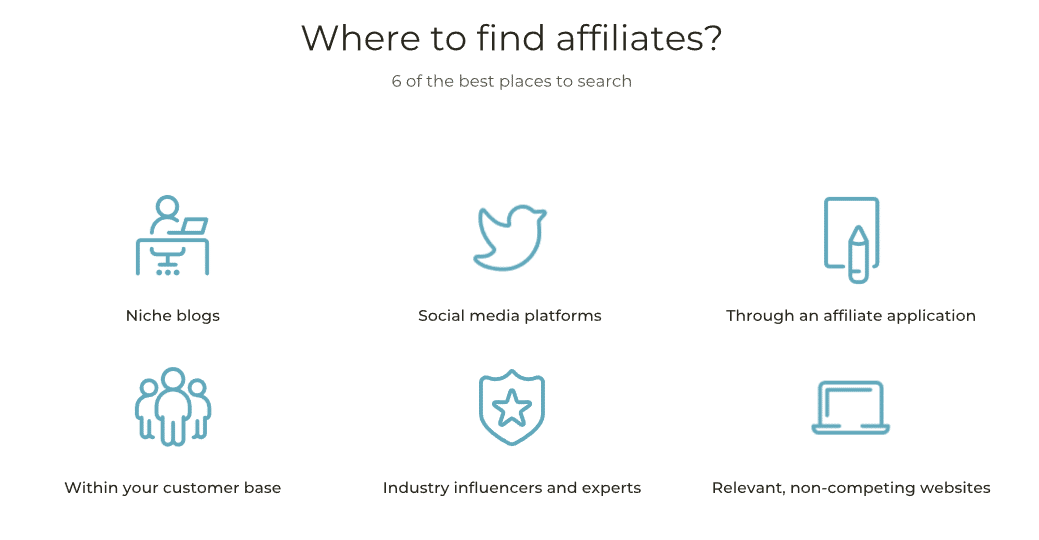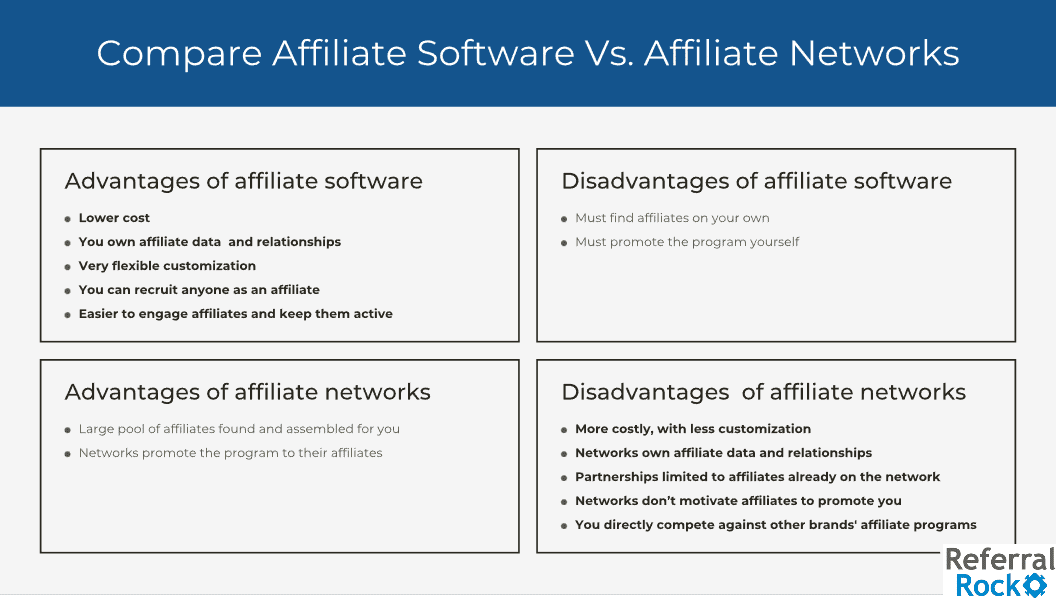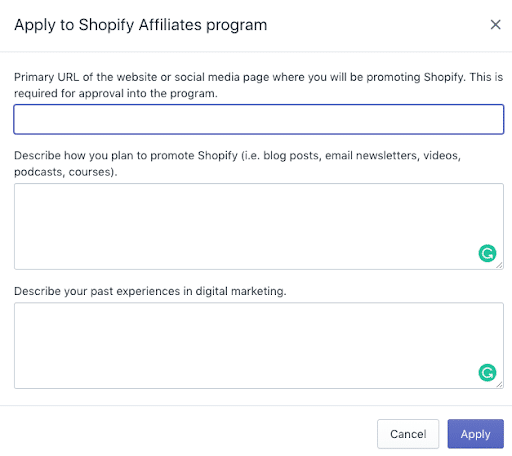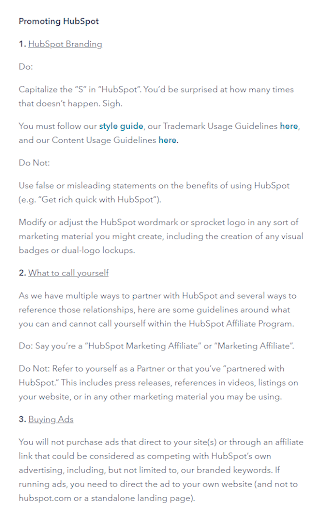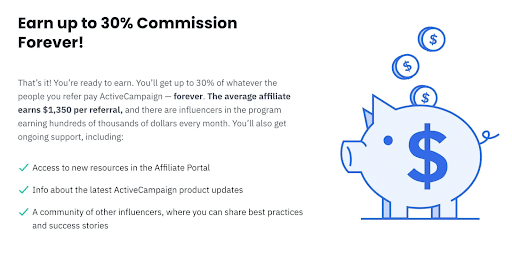Is your online business thinking about launching an affiliate marketing program? Affiliate marketing is a great way to reach new audiences and sell more products while boosting your bottom line, thanks to creators’ trusted recommendations. But before you get started, it’s critical to put together a plan of action that will help you succeed in the long run.
In this guide, we outline all of the best practices for creating and managing a successful affiliate marketing program – from choosing the right partners to creating your contract. You might be a beginner now, but we’ve got everything you need to become an affiliate marketing guru. Let’s dive in!
What is affiliate marketing?
An affiliate marketing strategy is a type of performance-based digital marketing in which a business rewards an affiliate for each customer brought by the affiliate’s own marketing efforts.
Content creators and entrepreneurs, known as affiliates, promote relevant products or services on their own channels via product reviews, recommendations, and other posts. They place tracked links to your website (affiliate links) within the content they create. Whenever someone clicks on the affiliate link and makes a purchase, the tracking features in the link credit the affiliate with a commission for bringing in the sale.
While the affiliate earns passive income, you gain more customers from the audiences they’ve built up. It’s a win-win!
Essential affiliate marketing best practices
To help you determine where you stand, we’ve created a list of the most important affiliate marketing best practices. Consider these 20 best practices for affiliate marketing to set your business up for success:
1. Lay out measurable goals for your affiliate program
One of the most important things you can do when creating an affiliate program is to set measurable goals, so you know whether the program is delivering the results you expect.
It’s important to define what you want to achieve with your program and how you plan to measure your results, whether it involves tracking the average order value from affiliate links, sales from unique customers clicking on those links, or another set of metrics.
No matter what other ways you measure success, though, two metrics are essential for anyone managing an affiliate program to track. Be sure you’re ready to track total affiliate sales and affiliate link conversion rates (conversion rates measure the percentage of people who make a purchase after clicking on an affiliate link).
The more specific, measurable, and detailed your goals are, the easier it will be for you to track them down the road and make changes where necessary. So, set goals that are SMART (specific, measurable, attainable, relevant, and time-bound).
2. Find affiliates who share your target audience
As you’re looking for affiliates, make sure they fit a few criteria. Your best bet is to find affiliates – social media influencers, bloggers, or niche experts – who share your target audience and occupy the same niche as your brand.
If they have a large following, find out which of the creator’s posts are most popular and why people engage with them in the first place. You need to see that they’re producing quality content consistently and that their followers are engaged with what they do. It’s also important that these creators be authentic and genuine; if someone has been able to build up trust with their audience, it will be easier for them to sell new products through affiliate links.
3. Skip existing affiliate networks
You may have heard of affiliate networks as one possible way to find and manage affiliates. But while existing affiliate networks find affiliates for you, that’s the only real advantage of using them. The drawbacks of existing affiliate networks far outweigh the benefits.
Existing networks charge extra fees for finding affiliates (as much as 30% of sales) – and that’s in addition to the commissions you pay affiliates. And existing networks own the affiliates’ data, so you don’t have full control over the data you’ll need to modify your program. You’ll also be constrained by the rules of the network, and might not get to build your program how you want.
Plus, existing affiliate networks also own affiliate relationships – meaning you can’t effectively build relationships with your affiliates. In addition, networks have no incentive to keep affiliates engaged with your brand. Since networks make more money when affiliates work with more brands, it’s better for the network if affiliates spread their time across many products rather than focusing on you.
4. Use affiliate marketing software instead of an existing network
Affiliate marketing software is a much better alternative to an affiliate network. This powerful marketing tool gives your brand full control over how you set up and run your affiliate program.
Software costs much less year over year than using an affiliate network, especially since you won’t be paying the extra fee to the network. It also lets you own all of your affiliate data. And when it comes to communication with affiliates, you’re in the driver’s seat and can build meaningful relationships. After all, your affiliates are your own, not on loan from a network.
With software, it’s easy to set up, run, and track your program how you want. It creates unique affiliate links for tracking. Plus, it lets you customize an affiliate portal to keep your affiliates in the loop and motivate them to stay engaged.
5. Make your application easy to find
Have you decided that you’d like potential affiliates to come to you, instead of (or in addition to) searching them out? Make it easy for affiliates to apply by providing a link to your application form in your affiliate marketing materials – whether that’s on an SEO-optimized landing page, in an email marketing newsletter, on your social channels, or somewhere else.
In the case of your website, optimize the page for SEO with keywords related to your niche plus the words “affiliate program” so the right affiliates can find you faster in a search engine.
For example, if you’re a snack subscription service, you might optimize your application page for the keyword “snack box affiliate program,” like Japan Candy Box and Fit Snack did.
6. Carefully screen affiliates
Once you have a list of potential affiliates, it’s time to do some vetting. Whether you’ve invited them to apply or they came to you, screen your applications and perform background checks to ensure that only the best affiliates are added to your program.
Of course, you’ll need to know exactly what you want in an affiliate, including their audience, reach, and promotional techniques, so you can tailor your application questions and screening process to identify the right creators.
Once you’ve got that squared away, here’s what you need to consider when screening potential affiliates:
- The affiliate’s niche: Investigate an affiliate’s niche, audience, engagement, and reach. Is their area of focus well-suited for your brand? How well does their content align with what you offer? And how high is their engagement – given that audience engagement’s a sign of trust?
- Previous affiliate promotions: If applicable, what brands have already partnered with this potential affiliate before? Did the work go smoothly, or did something go wrong during promotion (or after)? Did their campaigns perform well in terms of conversions or sales?
- How they’d promote you: Regardless of their previous affiliate experience, it’s a good idea to ask every affiliate about the ways they’d promote your brand, via a direct question on your application. Those details will further fill you in on their marketing know-how and their compatibility with your affiliate marketing plan.
- Their background and ethics: Why should a given affiliate be trusted to promote your brand? Are they a person of good morals who understands marketing best practices, and who has not acted unethically in the past? (For instance, have they avoided shady practices like cloaking links?) Check their social media accounts and online reviews, so you know more about them.
Shopify’s affiliate program asks affiliates to share their website, past marketing experience, and how they would promote Shopify before submitting their name to be an affiliate.
7. Choose a diverse affiliate base
Although all your affiliates need to reach your audience and meet your requirements, it’s a good idea to choose a fairly wide affiliate base. Select several types of affiliates with a range of different strengths.
- This means picking some bloggers, some creators across each of the social media platforms that your audience frequents most, and some affiliates who specialize in other channels that your audience is on (think expert voices in your niche).
- And if your audience can be segmented, choose affiliates whose followers span multiple segments of your audience.
- Check your affiliate mix at least every quarter, to ensure that your affiliates properly reflect all the channels that your customers frequent.
- If a new platform emerges that your customers enjoy using, jump on the trend and look for affiliates on that platform.
8. Create an affiliate agreement
Your affiliate agreement is a written contract that details the affiliate’s responsibilities. Affiliates must sign this agreement before joining your program, so it protects your brand in case affiliates act fraudulently.
Every affiliate marketing agreement should include the following details:
- An affiliate’s responsibilities for promoting your brand. For example, how often an affiliate must post new content about you and where that content can be published.
- What affiliates can and can’t do to promote their links
- Guidelines for the use of your logo and brand name in the context of their marketing efforts.
- Guidelines for portraying your brand in blog posts, social media posts, etc., including which photos are permitted to be used (if any).
- Responsibilities of your brand, including what it will provide affiliates
- The promised commission rate: This should include information about what must be done to earn commission, and when payments will be made.
- What unethical activities will lead to termination of an affiliate agreement, and immediately end their participation in your program.
Visit our previous article for more on writing an affiliate marketing agreement , plus a downloadable agreement template.
A portion of the HubSpot affiliate agreement that details the program’s branding and promotional guidelines.
9. Train affiliates on the fundamentals
During new affiliate onboarding, take time to teach affiliates about your brand’s standards and promotional expectations, including reviewing what you covered in the agreement so you can answer any questions. Be sure to cover any additional information they may need (beyond the details in the agreement) and provide resources related to their promotions.
For example, show affiliates the resources you’ve made available to enhance their content marketing, such as product images and videos. Cover where they can access these assets online, and how and when these resources will be updated
Plus, give affiliates access to your affiliate portal so they can send messages back and forth with you if needed. Show them how they can use the portal to they can access resources, communicate with you, and track the status of all their sales.
10. Optimize your program for mobile
Affiliates and their leads are spending more and more time on mobile devices. Make sure your affiliate application page, portal, and resources are mobile-friendly. Then, if you want to ensure maximum conversion rates from your affiliates’ traffic, check the pages that affiliates’ leads end up on once they’ve chosen to click the affiliate links, and optimize these pages for mobile as well.
After all, over 70% of ecommerce purchases are made on mobile devices (and that percentage is only getting bigger). People expect websites to be mobile-optimized – especially if those sites offer a product or experience worth paying for (which is exactly what your program should do).
11. Offer competitive but sustainable commissions
Affiliate marketing is a long-term game, so commission structures are critical to success. You should offer competitive but sustainable commissions – ones that will attract affiliates, but that won’t put such a strain on your business budget that you can’t afford to pay them out consistently.
It’s important to compare your affiliate commission rates against other brands in the same niche, and that could also attract similar affiliates or bloggers. If you’re paying more than the competition and you aren’t seeing a worthy ROI, it may be time for a change!
Usually affiliates want cash payouts in return for sales, so offering cash is usually best to attract affiliates to your program. But you can still offer other rewards, like tech items or valuable gear, to top affiliates as extra incentives.
ActiveCampaign offers affiliates recurring commissions of up to 30%.
12. Pay commissions on time
One of the most important affiliate marketing best practices is to pay your commissions on time. After all, affiliates will only work with you if they feel valued and appreciated. If you don’t pay your commissions on time, you risk losing valuable relationships with people promoting your products or services.
13. Only pay for results
It’s important to only pay affiliates after they deliver meaningful ROI to your business. The best practice for affiliate marketing commissions is not paying for clicks or impressions, but paying for sales only.
In an ideal situation, this would mean that a customer has purchased the product from your business after clicking on an affiliate link. This helps protect your business from click fraud or impression fraud, where affiliates generate their own illegitimate clicks or impressions to boost their commissions at a company’s expense.
Also, affiliates should only maintain their commissions if the service isn’t canceled or the product isn’t returned. That way, you’re truly only paying for ROI, and you’ll stop situations where unethical affiliates try to self-purchase for commissions, but then return the product.
If you’re a B2C business, only award commissions for affiliates who drive sales – not impressions, clicks or leads.
However, if you’re a B2B, paying per lead and per sale may make sense, because of the longer process from lead to sale. Still, the biggest B2B affiliate commissions should be paid out for sales, and lead generation should be rewarded with smaller commissions.
14. Change up commissions to keep affiliates engaged
One of the best ways to keep your affiliates engaged is by changing up commissions. This way, they won’t feel like they’re not making enough money. Make sure that the commission structure is competitive with other affiliate programs out there.
You could also temporarily offer higher commissions to encourage more sales at slower times of the year. This will keep affiliates motivated and help increase your bottom line during sales slumps. Plus, it’s a great way to change things up if you aren’t ready for a more permanent commission switch.
15. Reward successful affiliates with more incentives
Rewarding your best affiliates through added incentives shows that you appreciate them and encourages them to stay loyal to your brand. Consider offering affiliates a temporary or lifetime commission raise, or valuable gifts like tech products, when they reach certain lifetime sales milestones.
You could also give out individual cash bonuses for all affiliates that make a certain amount of monthly or quarterly sales, or bonuses for the top monthly or quarterly affiliates. For example, if an affiliate makes $100 in sales within a single month, you might send them a $10 Amazon gift card.
Logo maker Looka offers temporary commission bonuses to its affiliates when they exceed a certain amount in sales over a 30-day period. And that’s not all – they also become eligible for bonus offers.
16. Optimize pages on your website for affiliate conversions
Affiliates will nurture leads so they’re more likely to purchase from you, and then send warm leads to your website. But once those leads are on your website, you’ll have to hold up your end of the deal, so those leads follow through and purchase.
Optimize the landing pages, product pages, or store pages that affiliates are directing leads to, so those leads can further identify how your product meets their specific needs.
17. Consider offering coupons to increase conversions
You might also consider applying discounts to orders that come to you via an affiliate, to further prime affiliates’ leads for conversions. Attach a discount coupon code to each affiliate’s link. Then, tell the affiliates to explain to their followers that purchasing through their affiliate link will earn them a discount.
It’s up to you whether you’ll give out limited-time discounts for affiliates to share, or permanently tie a discount to each affiliate’s link.
You’ll also need to choose the type of discount. A set dollar amount or percentage off will keep things simple.
But giving affiliates a scaled discount coupon (ex. 10% off $50 and 20% off $100) may drive a higher average order value. And if affiliates are eligible for a percentage commission on sales, this higher average order value will benefit both you and the affiliates.
Remember, though, that coupons won’t do all the work. Affiliates must continue to produce trustworthy and useful content about your brand to encourage their audiences to click their links.
18. Keep affiliates in the loop
Regularly update your affiliates on new brand and product developments, as well as any changes to the affiliate program. To accomplish this, you could create an affiliate-only email list, newsletter, social media group, or Slack group. Or, you could even hold regular affiliate webinars.
You could also give each affiliate product samples for free, so affiliates can promote products more authentically.
Make sure you are transparent with affiliates. If there’s something you don’t want them to share publicly, make it clear which information should be kept confidential. Also, let affiliates know how they can contact you with any questions or concerns.
19. Know how to detect and stop affiliate fraud
Affiliate fraud can take many forms, but all types harm your bottom line and lead to false results. Bidding on PPC (paid ads) for your brand’s keyword, sending spammy emails with their links, secretly dropping the links that make them money into someone’s computer without their knowledge, sending fake traffic, or self-purchasing via their affiliate link with other credit cards are some types of fraud you’ll need to watch out for.
Closely monitoring every affiliate’s sales metrics will help you spot unusual events. For example, if there’s an abnormally high number of conversions or sales from a given affiliate within a short span, this could be a sign of suspicious activity.
Also, if affiliates misrepresent your product or totally disregard your brand identity, you should be wary. Making untrue or overblown claims about your product, or using language that you explicitly don’t want associated with your brand, are other types of fraud.
Check in if something looks off about an affiliate’s performance, and remind affiliates of your written agreement. If fraud is serious enough to cause damage to your business reputation or revenue stream, you can use the agreement to terminate affiliate relationships.
20. Refine your affiliate program based on data
As you analyze your data and see how your affiliate program is performing, take a look at the following:
- The number of new affiliates recruited in a given time period and how they’re performing (high and low performing affiliates)
- Affiliate-driven sales, and the percentage of overall sales they make up
- Conversion rates of affiliate-driven leads
- The average time period between when an affiliate-driven lead visits your site and when they purchase
- The quality of leads that are being generated by affiliates.
- The lifetime value for each new customer generated by any affiliate vs. the cost per acquisition (CPA)
- Overall best-performing affiliates, as well as affiliates who aren’t meeting expectations
Using the right affiliate software will help you see if you’re meeting your goals. And if not, consider refining your affiliate base, putting more energy into top affiliates, or changing commission rates. You might even use A/B testing to create two different affiliate experiences, then continue to use the strategy that generates the higher performance.
Wrapping things up
If you properly follow these affiliate marketing best practices, you’ll surely set your business up for success. One key piece to accomplishing several best practices – tracking and efficiently rewarding affiliates, collecting and applying the data you need, and effectively communicating with affiliates – is affiliate marketing software.
Looking for the right affiliate marketing campaign software for tracking an affiliate program’s success? Referral Rock offers the best affiliate software that gives you full control over your program, effectively engages affiliates, and focuses on the relationship between affiliates and your brand. Contact us to learn more.
Interested in industry-specific affiliate marketing best practices (plus affiliate program examples tailored to your industry)? Check out these resources:

